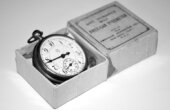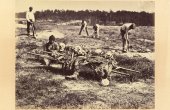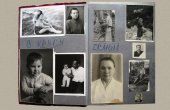Drone Technologies and the Future of Surveillance in the Middle East
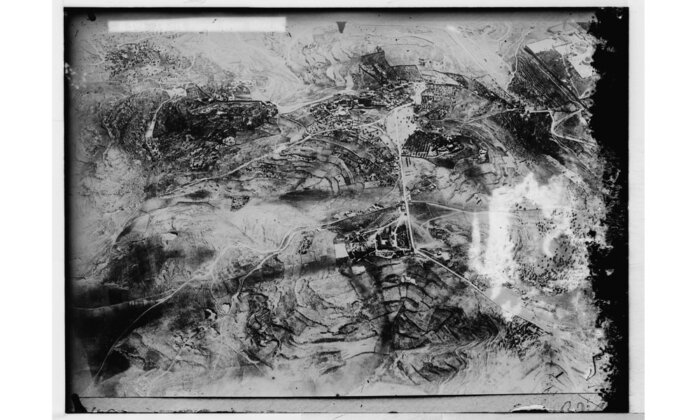
I first became aware of Heba Y. Amin’s project “The General’s Stork” in 2016 when, during a meeting in Berlin, she outlined the ongoing research she had been undertaking in relation to it. This conversation resonated with me for some time because, even though the factual basis for her research is straightforward, its implications, as I began to understand, are profound.
In 2013, Egyptian authorities detained a migratory stork that was accused of espionage. Reportedly captured by a fisherman, who viewed the bird with suspicion after noticing an electronic device attached to it, the bird was handed over to the local police station in Qena (a city situated on the east bank of the Nile in Upper Egypt). Upon further investigation, it transpired that the “camera device” was in fact a functioning tracking instrument attached by Hungarian scientists who were researching avian migratory habits. While the entire incident may at first appear risible, the event revealed a nation-wide level of mistrust in relation to aerial surveillance and its threat — a level of apprehension that, as we will see in the conversation below, was and remains understandable if we consider the extent to which military techniques of visualization define and ultimately delimit the topography of the Middle East.
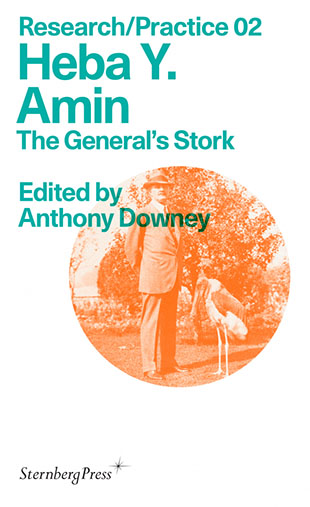
The import of this story opened up many questions and discussions that Amin and I have been focusing on for the last two years as we prepared “Heba Y. Amin: The General’s Stork” (Sternberg Press, 2020). We launched the book as part of Amin’s show, “When I see the future, I close my eyes,” which I curated for the Mosaic Rooms in London. The edited conversation below took place on the October 7, 2020, and throughout it we attempted to convey the ways in which the apparently regional politics of the Middle East, as evidenced in “The General’s Stork,” relate to broader global concerns about surveillance, dictatorships, and the emergence of digital authoritarianism.
Anthony Downey: I would like to take you back to 2013. The year marks a febrile moment in the Egyptian context. Hosni Mubarak had been ousted in 2011, Mohamed Morsi, the short-lived fifth President of Egypt, had been likewise ousted and subsequently jailed in 2013, and there was an ascendant militaristic order coming into being. In the middle of all of this, a stork landed in Egypt with a tracking device attached to it. How would you describe the atmosphere across the nation at that time, how were people feeling and how do you remember that specific moment?
Heba Y. Amin: As you can imagine, it was a really chaotic moment in time. Morsi was then subsequently overthrown through yet another uprising. I think people were confused, they didn’t really know where they stood politically on many fronts, and also distrusted each other. Of course, there was a euphoric gathering around the ousting of Mubarak, but everything that ensued afterward was conflicted, particularly with the rise and fall of the Muslim Brotherhood.
2013, in particular, was a very eventful year, stirred by numerous protests and intense political activity in the media, especially since many new platforms had emerged since 2011 and incited conversations about politics — this had been impossible in the last 30 years. My generation was not accustomed to openly talking about their feelings and their futures, about how they want to see the country progress politically. The excitement around possibilities for political involvement and dialogue is symptomatic of the heightened level of emotion in Egypt at that time. Considering the context in which the stork was captured and detained for espionage, it is not surprising anymore that everything would be suspicious, including a bird that lands with an electronic device attached to its body.
Paranoia does not arise out of a void — and I was interested to explore the source of that paranoia.
When the story came out, I was not only struck by its absurdity but also attentive to the media attention it attracted — particularly the ways in which international news channels pounced on the story and framed it as a laughable tale feeding into the narrativization of absurdity around Egypt, and probably because things weren’t panning out the way the international community wanted it to pan out. But paranoia does not arise out of a void — and I was interested to explore the source of that paranoia. I wanted to look at all the surrounding factors and pinpoint the conditions in which this bird would emerge and be accused of being a spy. That is where the project “The General’s Stork” started for me.
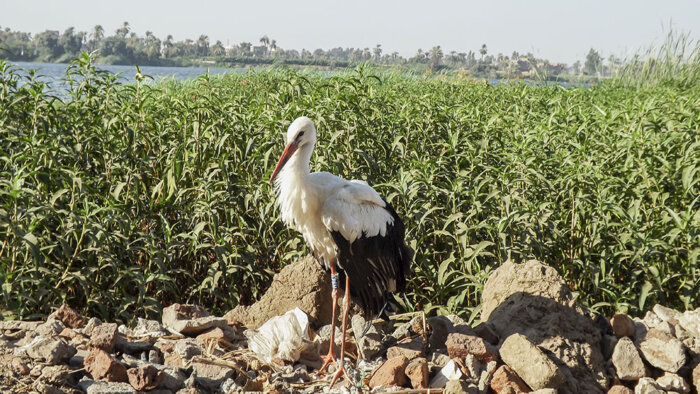
AD: It seems to me that the story of this stork, and also the infantilizing narrative that the Western media fabricated around it (the implication that this was an indication of a somewhat ridiculous reaction to events), is also symptomatic of a widespread paranoia that potentially points to a broader geopolitical issue. You latch on to this specific incident, but then your research takes you in many different directions, into historical research, investigative and archival research. In fact, the research predicates the practice. Could you outline how the research process developed?
HYA: It evolves on multiple fronts. The overall research takes an investigative approach to address the overarching question of where this paranoia is coming from. The driving force in this process is predominantly visual, and my inquiry into archival material and digital imagery is directing me through the narrative. When I started this project, I didn’t anticipate that the research would actually lead me to investigate the socio-geopolitics of the region and the foundations of aerial warfare. It is through a long and organically developing research process that I am starting to understand. By no means has this project reached an endpoint, it is still in its early stages, asking very broad questions that I am trying to answer through the research material. So, the spying stork becomes a tool with which I can navigate this very dense material and an allegory through which I can relate to these difficult narratives.
AD: Your approach is interesting because it is very speculative. There is an apparently absurd story that, on the one hand, seems humorous and people are drawn to it, but, on the other hand, this obscures a larger issue, namely, the history of a topographical quartering of the Middle East through visual methods. This history predates the invention of photography; in fact, the act of drawing or any act of representing the Middle East is in and of itself an attempt to determining its realities. In the course of your research, you came across a very important archive, the Matson Photograph Collection, which is one of the earliest photographic records of the landscape of Palestine, in particular, but also the region more broadly. I want to talk a little bit about this archive and the importance of its material for your research.
HYA: Alongside this topic of the politics of aerial surveillance, I have been really interested in investigating the ways in which these politics are inscribed into the technologies themselves. So, I am looking at the initial photographs in order to understand how they were used to put forward a particular ideological agenda that is subsumed under a colonial construct.
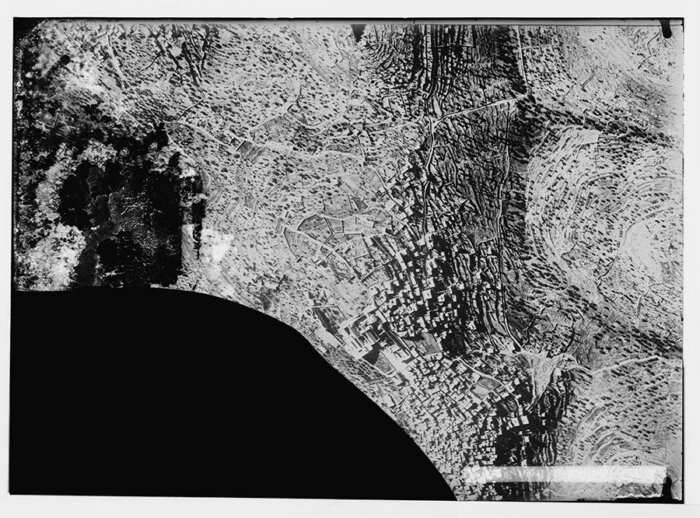
The G. Eric and Edith Matson Photograph Collection is housed in the U.S. Library of Congress and covers the period 1898 to 1946. It comprises about 22,000 glass and film photographic negatives and transparencies that are considered to be some of the earliest aerial photographs of Palestine. The photos were taken by a group that called themselves the American Colony, a Christian utopian society that was founded in Jerusalem in 1881 by immigrants from Chicago who were later joined by members of the Swedish Evangelical Church. Of course, they were drawn to the biblical history and importance of Palestine, and Jerusalem in particular. The American Colony fashioned itself as a philanthropic organization, but one of the ways in which they were sustaining themselves is taking and selling photographs, their main clients being governments, specifically the British government at the time.
Engaging with this archive, one is absorbed into its ideological framework, because the photographs are considered technological documents and are thus presented as evidence to support that particular ideology. The number of aerial photographs of Palestine indicates that its landscapes were recorded systematically — in such a way that human beings and signs of life became indiscernible within the landscape. The landscape was presented strategically as if it was untouched, in keeping with biblical ideas and political ideologies of the time, ultimately, to justify settler colonialism.
Oftentimes anything that is produced by technology is regarded as factual, as truthful. I became interested in questioning the very essence of that.
One hundred years later, where we find ourselves today, the status of these technological documents of evidence has not been challenged because oftentimes anything that is produced by technology is regarded as factual, as truthful. I became interested in questioning the very essence of that, of what we take to be truth. How can we address not just the images themselves, but the fact that these modes of violence are embedded in the technologies? Is it possible to take an aerial photograph of the same territory today and extract it from the politics that it is embedded within?
AD: Interestingly, the Matson collection generated an economy of photographs that were exchanged for money — but, apart from this base financial economy, it also involves a political economy: an ideology is inscribed into the very fact of these images, as evidenced in their framing and their aesthetic. There is also the sense that technology is likewise imbricated within ideological views of the region, with the apparent advance in photographic technique being seen as a means to further engineer a view of the Middle East. Technological developments continue to present the Middle East in an overdetermined or, indeed, predetermined manner, and one of the fascinating insights you include in this project is that the American military today uses a model of an Arab village upon which to develop surveillance techniques and drone technology.
HYA: What I discovered through my research was that all these technologies were, in fact, developed against the backdrop of the Middle East. For instance, some of the earliest aerial photographs from a militaristic, colonial, and scientific perspective were taken in Palestine and Egypt, and early use of drone technology for warfare was tested out in the Middle East. These very particular kinds of images that are often associated with colonialism and warfare were prevailing in the region. Its geography is being visualized in a very strategic way. So, my question is, when looking at these early aerial photographs and comparing them to contemporary images of the same landscapes, whether the colonial gaze can be extracted from these images.
My question is, when looking at these early aerial photographs and comparing them to contemporary images of the same landscapes, whether the colonial gaze can be extracted from these images.
The detached gaze of the bird’s eye view is often seen or presented as objective. In his interview for the book, Adel Iskandar examines the earliest footage that was broadcasted on live television from the Iraq war in the 1990s, and analyses how the bird’s eye view was used by reporters to demonstrate objectivity in their news coverage. It was no longer journalists framing these landscapes but the machine — the human element in reportage is extracted and is therefore supposed to be neutral. Of course, this kind of image-making is never neutral but highly strategic and serves to fit a very particular political agenda.
AD: I would like to go into more detail about the ascendancy of drone and surveillance technology. The history of drones has largely been developed with the Middle East in mind, but drones in and of themselves operate without having either the capacity to invade or, indeed, occupy. Rather, the issue at hand is the means and methods of visualization. A term that you and I have been discussing in depth is techno-aesthetics, in particular the techno-aesthetics of drone warfare. Could you outline the techno-aesthetic regime within which the Middle East is being produced as a result of advances in drone technology?
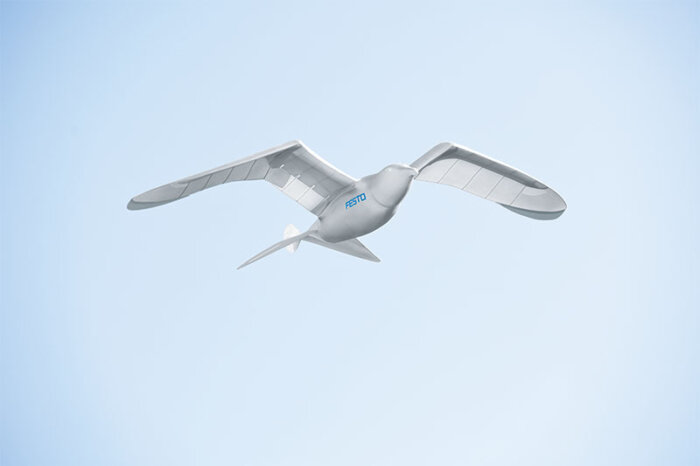
HYA: I think it is important to address not just techno-aesthetics, but how this visualization is very much created, first of all, by people and, second of all, with a political agenda in mind. Consequently, the image is produced from a very specific vantage point and for a very specific purpose. Again, I reject the idea that machine-made images are neutral. Algorithmic determination denotes how algorithms are set to extract certain information on their own — but, ultimately, somebody is creating those algorithms to suit a particular political hierarchy. Therefore, techno-aesthetics, ought to be considered within the political and geographic framework they were created in.
AD: I was always taken by Edward Said’s notion of the “imaginative command” that the West must maintain over the Middle East in order to sustain its own vision of itself. Even though Said was not writing about digital imaginative command, his thesis largely preempts our era: how is “imaginative command” defined through technological means, through the digital image. It seems to me now that the digital image, the digitization of images, alongside the technological means of surveillance, are no longer geared towards defining the past or the present, but towards predicting or anticipating the future. It is as if the history of the Middle East is being pre-written through digital means.
HYA: This is important to note, especially in this uncertain time of the pandemic when we are increasingly experiencing our dependence on technology, as well as the extent to which these surveillance technologies have been expedited. There certainly is a future-looking element in surveillance which has become tangible, for example in 2017, when the Israeli government used algorithmic determination to identify potential terrorists before they actually committed any terrorist act. Over 400 Palestinians were detained that year based on the algorithmic determination of their possible danger. So, I think it is really important to think about how surveillance technologies and algorithmic determination might manifest in a future scenario — and that future scenario is here today.
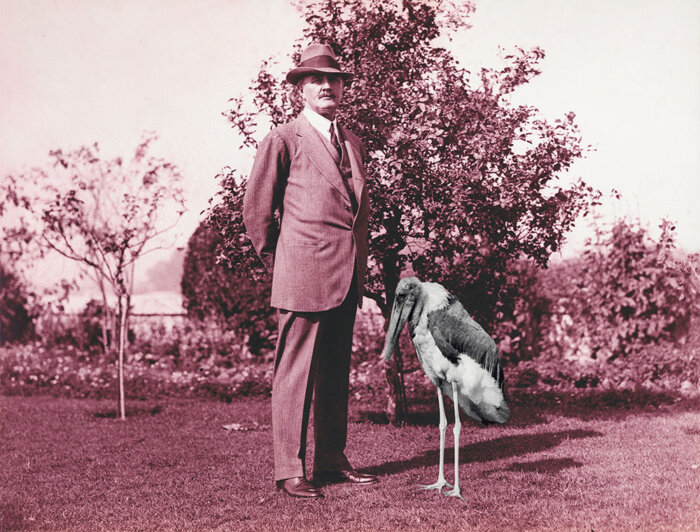
AD: Through your research I learned about Lord Allenby and remain fascinated by him, as he is quite a prophetic figure. Lord Allenby was the Commander-in-Chief of the Egyptian Expeditionary Force (EEF) in Cairo and was given orders by Prime Minister David Lloyd George to capture Jerusalem from the Ottoman Turks in 1917. He launched an attack based on a biblical prophecy found in the book of Isaiah 31:5, which states: “As birds flying, so will the Lord of hosts defend Jerusalem; defending also he will deliver it; and passing over he will preserve it.”
By reason of this prophecy, he sent as many planes as possible to fly over Jerusalem, forcing the Turks to surrender the city. So, when Allenby marched into Jerusalem, it was seen as a prophecy fulfilled. Right at the core of this prophetic figure, or augury, is the symbolic and actual presence of the avian, the prophecy of the birds flying over Jerusalem, the birds mutating into airplanes, the airplanes mutating into drones, and the menace of predictive drone technology metastasizing into the specter of aerial bombardment. This prophecy has become predictive in terms of drone technology, envisioning what will be and what is yet to come. And if drone technology, which is based upon algorithmic determination, then everyone could potentially be a terrorist, a combatant, or placed under suspicion. It seems to me that we have entered into a neo-colonial technological age, which has re-inscribed racial bias and apparent threat into the technologies of surveillance.
I want to shift the discussion and, in the above contexts, consider the knowledge that is produced in the context of your work and the means by which you transfer that knowledge. For example, the interview with Laura Poitras that we included in our book, you talk about how to utilize the cultural space as a means to progress and transfer sensitive knowledge. That knowledge becomes newsworthy, not by virtue of being seen on television or in news media, but by being performed in a cultural space. So, I think this performative dimension presents an integral part of your practice. Could you elaborate on this a little bit further?
HYA: Research and writing form an important component of my work, but I realized that, as an artist, I have a strength to tell stories and to use visual material to open up topics, like drone warfare and aerial surveillance technologies, that might seem impenetrable, or risky, or just difficult to have a conversation about. When you come across an image such as the portrait of Lord Allenby with his pet marabou stork in Cairo, it is so intriguing and peculiar that you are pulled in immediately. I discovered the power of that visual pull on people and its potential to raise questions.
In many respects, we are so accustomed to media narratives that we have become numb to questioning them in meaningful ways.
In many respects, we are so accustomed to media narratives that we have become numb to questioning them in meaningful ways. Academic texts are often very difficult to access when you are not part of that circle, but the cultural realm and art are ways to engage an audience on multiple levels. For instance, somebody could visit this exhibition and just enjoy the imagery. But when you start to ask questions and delve deeper into the written and archival material presented in the exhibition, a very complex and nuanced story unravels. What is oftentimes missing in media is nuance. And this is why I am interested in taking these media stories and injecting them with nuance because they do tell a good story. I think this is the strength of research practice as an artist.
AD: From your position, there also seems to be a very performative interjection of yourself into historical narratives, that are potentially elided or have been erased entirely, in order to reconceptualize, to speculate upon what was lost, but equally what could be re-found through this process. Bearing that in mind, this project is not finished. In fact, all of the projects on view in this exhibition, “The General’s Stork” that forms the basis of the book, but also “Operation Sunken Sea” and “Project Speak2Tweet,” as well as our joint research into the Matson Photograph Collection, will continue throughout and beyond the exhibition. How could you envisage your projects, and “The General’s Stork” in particular, developing?
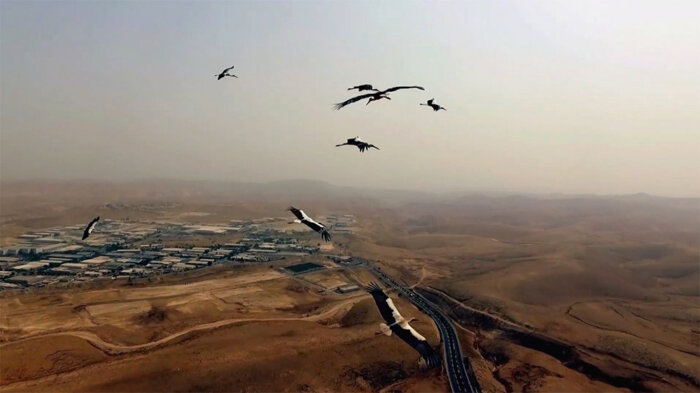
HYA: Well, I am following the tracks that interest me. In that sense, performing archives is a way for me to gain a better understanding of the subject matter in order to present the material findings. I am not interested in simply putting forward historical or archival material and letting the audience deal with that. Rather, I am interested in consuming this material and regurgitating it in a different way that might open up alternative viewpoints. So, I am very good at making my life very difficult to the extent that I don’t think any of my projects have an endpoint — they could go on forever. What they are addressing are complex and deep fields in and of themselves. Right now, I look forward to delve into the Matson collection with you and explore these aerial photographs of Palestine. There seems to be a big gap in visual studies and history and, more generally, in our understanding of the historical context of this region that needs to be told through these photographs. I want to look at them twofold, from a research and rigorous academic perspective but also through a visual approach, and bring these practices together to fill in that gap.
AD: Through our collaboration, one of the points that has become more and more clear in my mind with regard to the Matson Photograph Collection is that the archive is never about the past. It is always about contesting future interpretations of the past and present. Ultimately, the archive is a forward-looking objective that seeks to determine the future. I am sure that you and I will continue discussing this issue for quite some time.
HYA: Yes, for sure, and I look forward to seeing where this research goes.
The authors would like to thank Angelina Radakovic and Siegrun Salmanian (Mosaic Rooms, London) for their assistance with the production of this interview and Lisa Deml for her preparation of the transcript.
Heba Y. Amin is a multimedia artist from Egypt. Amin teaches at Bard College Berlin, is a doctorate fellow in art history at Freie Universität, and a current Field of Vision fellow in New York. She is the co-founder of the Black Athena Collective, curator of visual art for the MIZNA journal, and co-curator for the biennial residency program DEFAULT with Ramdom Association.
Anthony Downey is Professor of Visual Culture in the Middle East and North Africa, within the Faculty of Arts, Design and Media at Birmingham City University. He is the series editor for Research/Practice, published by Sternberg Press, and the author of several books on the politics of visual culture.
